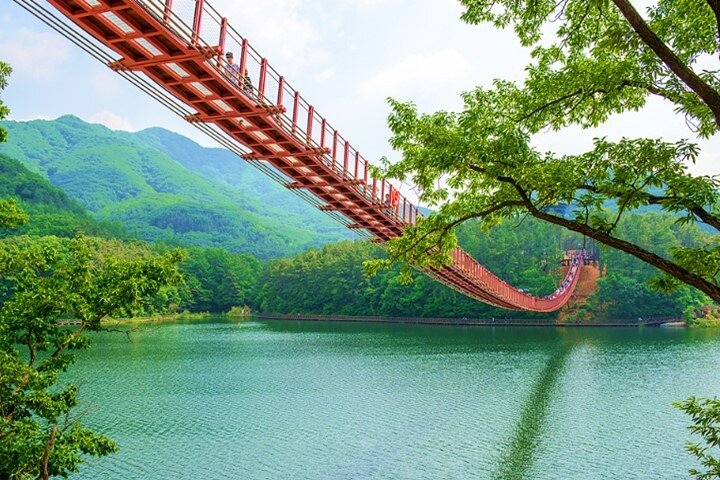Exploring Korea’s DMZ: A Journey Through History and Culture
Embarking on a journey to Korea’s DMZ, I was eager to explore the historical and cultural significance of this unique region. Join me as I delve into the landscapes, cuisine, and stories that define this remarkable tour.
A Journey Through History: The DMZ Experience
The day began with a sense of anticipation as I embarked on a journey to explore one of the most historically significant areas in Korea—the Demilitarized Zone (DMZ). As someone who has always been fascinated by the intricate tapestry of Asian cultures, this tour promised to be a deep dive into the complex history and present-day realities of the Korean Peninsula. Our guide, Sebastian, picked us up in a sleek Hyundai Staria touring van, equipped with all the modern comforts one could wish for. His excellent command of English made the journey smooth and informative, as he shared insights into Korean politics, culture, and the significance of the DMZ.
Our first stop was the Gamaksan Suspension Bridge, a short hike from the parking area. The bridge offered breathtaking views of the surrounding Korean mountains, a reminder of the natural beauty that coexists with the region’s turbulent history. Standing on the bridge, I felt a profound connection to the land, a feeling that resonated with my own experiences of cultural immersion across Asia. The air was crisp, and the scenery was a perfect prelude to the historical exploration that lay ahead.
Culinary Delights and Cultural Insights
After our invigorating hike, Sebastian took us to a local diner for lunch. As a cultural consultant, I always seek to experience local cuisine as a gateway to understanding a culture’s essence. I asked Sebastian to order his favorite Korean dishes, and he did not disappoint. We feasted on crispy dumplings, fried rice, and noodles with Jajangmyeon black bean sauce, all washed down with frosty bottles of Cass Beer. The meal was served family-style, encouraging a sense of community and shared experience among our group.
The flavors were rich and comforting, a testament to the culinary traditions that have been passed down through generations. As we ate, Sebastian shared stories about Korean dining customs and the significance of each dish. It was a moment of cultural exchange that enriched our understanding of Korea beyond the historical context of the DMZ.
The Heart of the DMZ: A Walk Through History
With our appetites satisfied, we continued our journey to the heart of the DMZ. The highlight was the exploration of the Third Tunnel, a clandestine passage dug by North Korean forces. The 1.2 km hike down and back up the tunnel was both a physical challenge and a poignant reminder of the tensions that have shaped the region’s history. As we emerged from the tunnel, we made our way to the New Dora Observatory, the closest point to the North Korean border.
From the observatory’s café, we gazed across the border, with Sebastian’s binoculars offering a clear view of both the North and South Korean flags, separated by a mere 800 meters. The sight was a powerful symbol of division and hope, a visual representation of the complex relationship between the two nations. Although photography was prohibited, the image is etched in my memory, a reminder of the resilience and aspirations of the Korean people.
The tour concluded with a visit to a nearby farming village, where we witnessed the daily lives of those living near the DMZ. It was a humbling experience, one that underscored the importance of understanding and respecting the diverse cultures and histories that define Asia. As I reflected on the day’s journey, I felt a renewed appreciation for the power of travel to bridge cultural divides and foster a deeper understanding of our shared humanity.
For those seeking a meaningful exploration of Korea’s past and present, I highly recommend the DMZ and N-Seoul Tower Tour. It is an experience that will leave you with a profound sense of connection to the Korean Peninsula and its people.




















































